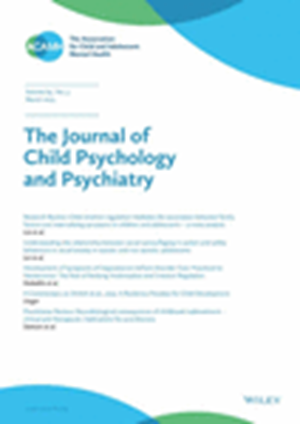Trajectories of childhood adversity, social welfare dependence in young adulthood, and the mediating role of mental health problems: a Danish population-based cohort study.
IF 7
1区 医学
Q1 PSYCHIATRY
引用次数: 0
Abstract
BACKGROUND Childhood adversity is associated with increased risks of long-term social welfare dependence in young adulthood. Mental health problems may mediate this relation, but evidence remains lacking. METHODS 613,643 individuals from the Danish Life Course cohort (DANLIFE) were categorized into five trajectory groups based on their annual exposure to adversity: low adversity, early-life material deprivation, persistent material deprivation, loss or threat of loss, or high adversity. Mental health problems were identified through hospital contacts and psychotropic medication use. Long-term social welfare dependence was defined as receiving social benefits for at least 52 consecutive weeks within the follow-up period. We examined the contribution of differential exposure and susceptibility to mental health problems in relation to childhood adversity and long-term social welfare dependence through causal mediation analysis. RESULTS The different childhood adversity groups saw 54-319 additional cases of long-term social welfare dependence per 1,000 individuals compared with the low adversity group. These associations were partly mediated through mental health problems. To illustrate, in the high adversity group, differential exposure to mental health problems accounted for 15.0% (95% CI: 14.4-15.6) of the total effect, while differential susceptibility accounted for an additional 9.8% (95% CI: 8.8-10.9). CONCLUSIONS Mental health problems partly mediate the relation between childhood adversity and long-term social welfare dependence in young adulthood through both elevated exposure and increased susceptibility. Addressing mental health problems and increasing resilience among individuals with a history of childhood adversity may mitigate the risk of subsequent social welfare dependence.童年逆境、青年期社会福利依赖和心理健康问题的中介作用轨迹:一项丹麦人口队列研究。
背景童年时期的逆境与成年后长期依赖社会福利的风险增加有关。心理健康问题可能是这种关系的中介,但证据仍然缺乏。方法将613,643名丹麦生命历程队列(DANLIFE)的个体根据其每年遭受逆境的情况分为五个轨迹组:低逆境、生命早期物质剥夺、持续物质剥夺、损失或损失威胁、高逆境。通过医院接触和使用精神药物确定了精神健康问题。长期社会福利依赖被定义为在随访期内至少连续52周接受社会福利。我们通过因果中介分析,考察了不同暴露程度和心理健康问题易感性对儿童逆境和长期社会福利依赖的影响。结果与低逆境组相比,不同童年逆境组每1000人的长期社会福利依赖增加54-319例。这些关联部分是通过心理健康问题介导的。为了说明,在高逆境组中,不同的心理健康问题暴露占总效应的15.0% (95% CI: 14.4-15.6),而不同的易感性占额外的9.8% (95% CI: 8.8-10.9)。结论心理健康问题通过暴露量的增加和易感性的增加在童年逆境与青年期长期社会福利依赖之间起部分中介作用。解决心理健康问题和提高童年有逆境史的个人的复原力,可能会减轻随后依赖社会福利的风险。
本文章由计算机程序翻译,如有差异,请以英文原文为准。
求助全文
约1分钟内获得全文
求助全文
来源期刊
CiteScore
13.80
自引率
5.30%
发文量
169
审稿时长
1 months
期刊介绍:
The Journal of Child Psychology and Psychiatry (JCPP) is a highly regarded international publication that focuses on the fields of child and adolescent psychology and psychiatry. It is recognized for publishing top-tier, clinically relevant research across various disciplines related to these areas. JCPP has a broad global readership and covers a diverse range of topics, including:
Epidemiology: Studies on the prevalence and distribution of mental health issues in children and adolescents.
Diagnosis: Research on the identification and classification of childhood disorders.
Treatments: Psychotherapeutic and psychopharmacological interventions for child and adolescent mental health.
Behavior and Cognition: Studies on the behavioral and cognitive aspects of childhood disorders.
Neuroscience and Neurobiology: Research on the neural and biological underpinnings of child mental health.
Genetics: Genetic factors contributing to the development of childhood disorders.
JCPP serves as a platform for integrating empirical research, clinical studies, and high-quality reviews from diverse perspectives, theoretical viewpoints, and disciplines. This interdisciplinary approach is a key feature of the journal, as it fosters a comprehensive understanding of child and adolescent mental health.
The Journal of Child Psychology and Psychiatry is published 12 times a year and is affiliated with the Association for Child and Adolescent Mental Health (ACAMH), which supports the journal's mission to advance knowledge and practice in the field of child and adolescent mental health.

 求助内容:
求助内容: 应助结果提醒方式:
应助结果提醒方式:


